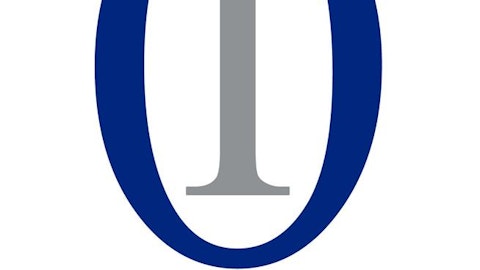If you want an example of a pharmaceutical that’s done an exemplary job fighting off the patent cliff, look no further than GlaxoSmithKline plc (ADR) (NYSE:GSK). Glaxo has battled back generics by beefing up its own pipeline with two long-term COPD treatments currently working their way to the FDA review desk, Breo Ellipta and Anoro, as well as through strategic purchases, such as that of Human Genome Sciences for $3.6 billion to gain full rights to Benlysta, the first systemic lupus drug approved in 40 years.
2. Drug prices getting out of hand
This is one of those out-of-sight, out-of-mind concerns, but branded drug companies need to walk a very fine line when pricing their drugs; otherwise a continued escalation in costs could drive patients, physicians, insurers, and even U.S. regulators to intervene.
I can’t overstate this enough, but drug prices matter… a lot! Drug prices should be set high enough that a company that has invested what is close to a billion or more in the development process can get its costs back and turn a profit. However, drug prices can’t be so high that physicians worry about reimbursements, insurers begin to place ridiculous restrictions on usage for their plan members, and regulators probe your marketing practices. As you can see by the following chart from the Centers for Medicare and Medicaid Services, prescription drug costs are soaring for individuals, the government, and your insurers.

Source: Centers for Medicare and Medicaid Services, Medicare Current Beneficiary Survey.
Marketing probes have become an all-too-common practice as of late. Questcor Pharmaceuticals Inc (NASDAQ:QCOR), for instance, is currently being investigated concerning its marketing practices over its wonder drug Acthar, which is priced at $23,000 per vial across all 19 ailments it’s approved to treat.
The now bankrupt KV Pharmaceutical Co (PINK:KVPHQ) is another not-so-shining example. Its preterm-birth prevention drug, Makena, was approved in 2011 and the company quickly priced the injection at an outrageous $1,500. Considering that similar compounds were being injected by physicians for $20, the pricing of Makena was ludicrous… so ludicrous, in fact, that Congress even got involved. The end result was a slap against Makena’s patent exclusivity, a huge reduction in the price of the drug (but still nowhere near where advocacy groups felt it should price), and the eventual bankruptcy of KV Pharmaceuticals just months later.
Perhaps no drug stands out as a better example as pricing itself out of success than Dendreon Corporation (NASDAQ:DNDN)‘s advanced-stage prostate cancer treatment, Provenge. The three injection treatment — which involves harvesting a patient’s own immune cells, exposing them to a protein that “teaches” them how to seek out and attack prostate cancer cells, and then reinjecting the cells back into the patients’ prostate – costs $93,000 and has been growing like a snail due to slightly cheaper all-oral late-stage treatments available from Johnson & Johnson (NYSE:JNJ) and Medivation Inc (NASDAQ:MDVN). Dendreon may be able to salvage sales if it can show efficacy as a combination therapy with these all-oral drugs, but, as of now, some insurers simply won’t cover the drug.
There are two ways to walk the tightrope when it comes to pricing. Either be an orphan drug developer catering to a rare disease where a high-price-point is already expected, or sell the benefits of your product to the insurance industry, which ultimately takes the out-of-pocket costs away from consumers and gets them using branded medications. VIVUS, Inc. (NASDAQ:VVUS) may not be the best example after sales of its anti-obesity drug, Qsymia, came up $1 million shy of the $3 million analysts had expected last quarter, but, to me, it offers a picture-perfect case of how to handle pricing backlash with the company partnering with Aetna Inc. (NYSE:AET) and seeing prescriptions pick-ups soar almost immediately afterward.

